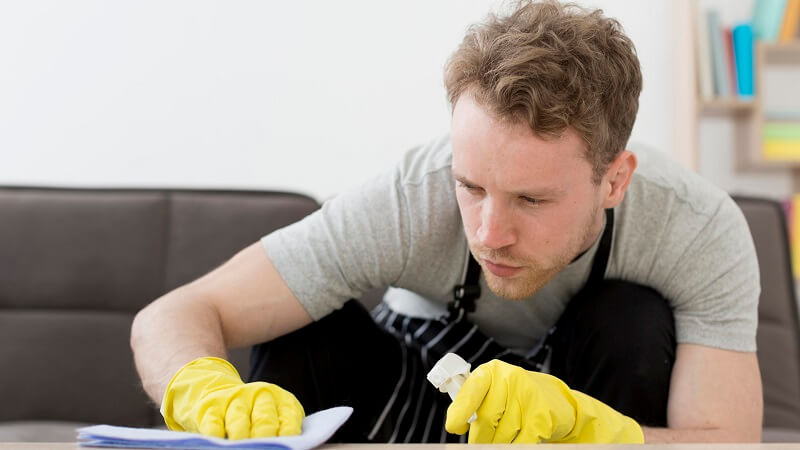Dust can be more than just an unsightly annoyance; it can also aggravate allergies and contribute to a less hygienic home environment. Mastering effective dusting techniques is crucial for maintaining a clean, healthy living space. This article explores how to conquer dust and keep your home sparkling clean with advanced techniques, tools, and a regular cleanup routine.
Understand the Enemy: What is Dust?
Understanding what you’re dealing with is crucial for effective cleaning. Dust isn’t just dirt; it’s a complex mixture of pollen, skin cells, fabric fibers, and more. This makes it a persistent adversary in the quest for a clean home.
Composition of Household Dust
Household dust can vary greatly depending on your environment and lifestyle. Common components include human and pet hair, paper fibers, and microscopic specks of worn furniture. Knowing this can help you choose the right tools and methods for effective removal.
Fun Fact: A Dusty Reality
Did you know that an average six-room home in the United States collects 40 pounds of dust each year? That’s a lot of sneezes!
Equip Yourself: Choosing the Right Tools
Visit http://www.customcleaningpb.com/ to find out how the right tools can make a significant difference in your cleaning efficiency. Using inadequate tools can spread dust around rather than removing it.
Microfiber Magic
Microfiber cloths are ideal for dusting because they trap particles within their fibers, effectively removing dust without scratching surfaces. When dampened, they’re also excellent for wiping down areas that need a little extra attention.
HEPA Filters for the Win
For vacuuming, opt for a machine equipped with a HEPA filter. These filters are capable of trapping extremely fine particles, preventing dust from recirculating into the air of your home.
Dusting Done Right: Techniques That Work
Effective dusting is not just about swiping a cloth over surfaces. It requires strategy and technique to be genuinely effective.
Top to Bottom
Always start dusting from the highest surfaces and work your way down. This method ensures that any dislodged dust particles that fall during cleaning will be captured as you make your way to lower surfaces.
The Right Strokes
Use gentle, consistent strokes when dusting. Quick, vigorous movements are more likely to kick up dust into the air rather than capture it. For delicate items like lampshades or blinds, using a vacuum with a brush attachment can be more effective than a cloth.
The Power of Proper Wiping
After dusting, wiping down surfaces can help capture any lingering particles and provide a deeper clean. This step is crucial for areas like kitchens and bathrooms where germs can accumulate.
Choose Your Cleaner Wisely
For most surfaces, a mild soap solution or a designated cleaning spray will do the trick. Be wary of using overly harsh chemicals, especially on sensitive surfaces like wood or electronics, as they can cause damage.
A Systematic Approach
Develop a system for wiping down rooms—always work in the same direction and sequence to ensure no surface is overlooked. This methodical approach helps establish a routine that makes cleaning more straightforward and thorough.
Engage the Whole Household
Cleaning shouldn’t be a solo endeavor. Involving the whole family can make the task quicker and more enjoyable.
Chore Charts and Incentives
Create a chore chart that assigns specific dusting and wiping tasks to different family members. Offering small rewards for completed chores can motivate younger family members to participate regularly.
Fun Fact: Team Effort
Research shows that children who engage in household chores from an early age are more likely to excel in self-discipline and responsibility later in life. They’re also more empathetic and able to manage frustration.
Maintain to Minimize
Regular maintenance is key to keeping dust at bay. Establishing a routine that includes frequent dusting and wiping will prevent dust from accumulating, making each cleaning session less daunting.
Routine Refresh
Incorporate a quick daily or weekly “maintenance dust” of high-traffic areas to keep surfaces looking pristine and reduce the workload during more extensive cleaning sessions.
In conclusion, conquering dust in your home is about more than just the occasional sweep. By understanding what comprises dust, selecting the right tools, applying effective techniques, and involving your household in the process, you can maintain a healthier, cleaner environment. With these strategies, you’ll not only reduce the amount of dust in your home but also enhance the overall quality of your living space.
